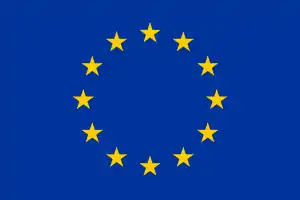Hazaras in Europe
Hazara in Europe are people of Hazara descent living in Europe today hundreds of thousand are residents in Europe. The vast majority form part of what is sometimes called the "Hazara diaspora"[3]
 | |
| Total population | |
|---|---|
| 130,000 (2016) | |
| Regions with significant populations | |
| 40,000 (2015)[1] | |
| 22,000 (2016)[2] | |
| Languages | |
| Eastern-Persian (Hazaragi) German French English Swedish Norwegian | |
| Religion | |
| Islam | |
| Related ethnic groups | |
| Hazara diaspora | |
| Part of a series on |
| Hazara people |
|---|
 |
|
About · The people · The land · Language · Culture · Diaspora · Persecutions · Tribes · Cuisine Politics · Writers · Poets · Military · Religion · Sports · Battles |
History
The Hazaras have encountered intense persecution for centuries. In the late 1800s, much of the Hazarajat, their mountainous homeland in central Afghanistan, was seized by Pashtun and other tribes. More recently, the Soviet invasion in 1979 prompted another mass exodus. A further wave fled the country as the largely ethnic Pashtun Taliban took control of the Hazarajat in 1998, massacring thousands of Hazaras. The first Hazara came to Europe were in 1800s and they were from the Indian British army infantry regiment 106th Hazara Pioneers,[4] 4th Hazara Pioneers and 108th Hazara Pioneers they were fought in WW1 on side of allies in France[5]) but more recent Hazaras came to Europe after NATO Forces left Afghanistan.
See also
References
- The population of people with descent from Afghanistan in Germany is 76,000. Hazara make up an estimated 20% of the population of Afghanistan depending to the source. The Hazara population in Germany is estimated from these two figures. "Second collective deportation of rejected asylum seekers from Germany arrives in Afghanistan - Germany - DW - 24.01.2017". DW.COM.
- Talib, Husayn (19 August 2017). "Austria holds refugee talks as young Hazaras flee persecution to make 'dangerous' journey to Europe". ABC News. Retrieved 29 February 2016.
- name="REUTERS">Hussain, Talib (21 August 2018). ""Who are the Hazaras and what are they escaping?"". REUTERS News. Retrieved 15 June 2017.
- John Gaylor (1992). Sons of John Company: the Indian and Pakistan Armies 1903-91. Spellmount. ISBN 978-0-946771-98-1. Retrieved 29 March 2011.
- The Indian year book. Bennett, Coleman & Co. 1933. Retrieved 29 March 2011.